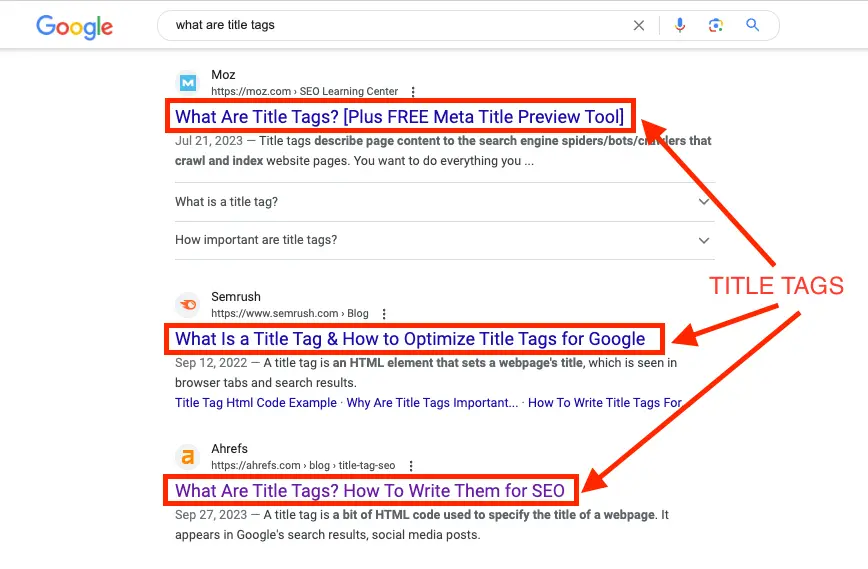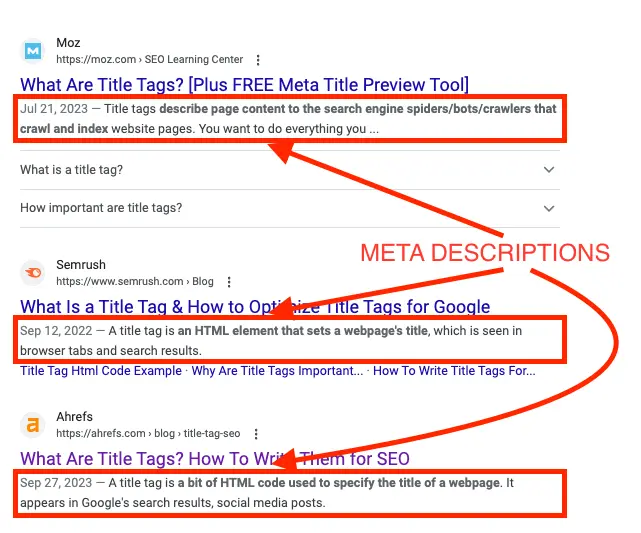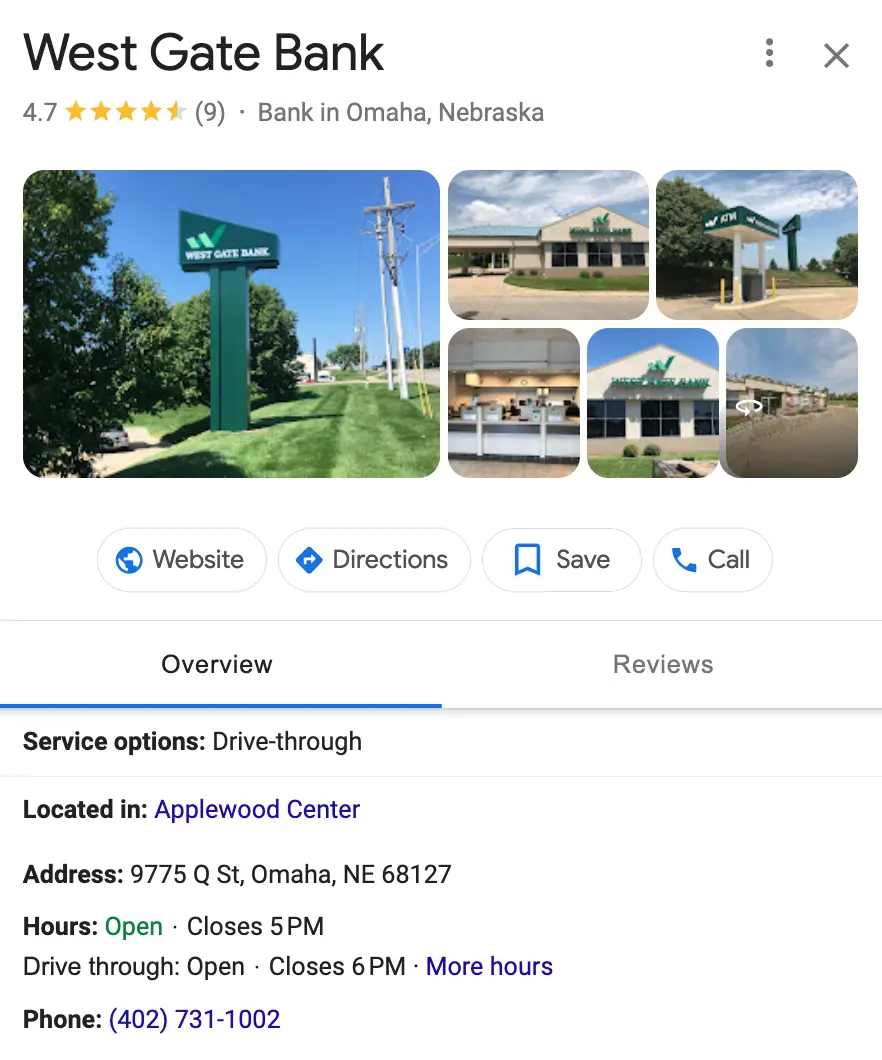Search engine optimization can typically be separated into two broad categories: on-page SEO and off-page SEO. Together, these processes work to improve visibility, drive traffic, and establish a digital presence. Learn more about the differences between on-page and off-page SEO, why they’re essential, and how you can use both for your digital marketing strategy.
- On-Page SEO vs. Off-Page SEO
- What Is On-Page SEO?
- What Is Off-Page SEO?
- Why Are Both On-Page & Off-Page SEO Important?

On-Page SEO vs. Off-Page SEO
Both on-page and off-page SEO are important for optimizing for Google’s E-E-A-T guidelines, improving your website’s ranking in search engine results pages (SERPs), and establishing an online presence. Here are some ways that they differ.
| On-Page SEO | Off-Page SEO |
| On-site elements you have physical control over and can optimize | Off-site elements that are mostly controlled by consumers and other brands |
| Focuses on creating quality content, improving user experience, and increasing accessibility | Focuses on building authority, gaining exposure, and earning trust through backlinks and mentions |
What Is On-Page SEO?
On-page SEO (also known as on-site SEO) is the process of optimizing a webpage’s elements for search engines to earn organic traffic. On-page SEO efforts help search engines understand your page and its content, as well as its relevance to a search query. This process involves strategizing how everything on your website caters to better user experience (UX) and search engine visibility.
On-Page SEO Factors
On-page SEO elements consist of everything on your website that you have control over, such as content, title tags, alt text, URLs, and more. Here are some of the key components of on-page SEO that’ll help improve your site’s rankings.
Content Quality
Google prioritizes content that is helpful, original, and relevant to a user’s search intent, so publishing high-quality content is one of the most important on-page SEO ranking factors. Quality content should provide value to your target audience while also being optimized for search engines. Conducting preliminary keyword research helps identify potential audiences and content opportunities. Then, optimizing content with a variety of those relevant keyword types can help you rank higher on SERPs, reach your target audience, and generate backlinks—an essential off-site SEO factor covered later in this guide.
HTML Headers

HTML headers are tags that are used to establish page structure and hierarchy by organizing topics in a logical way. H1 tags are used for the page’s title, indicating the main topic to grab readers’ attention. H2s separate the main points of the piece into distinct sections, while H3s, H4s, and so on break up sections further so you can expand upon each point as needed. In addition to helping Google understand the content of your pages, headings are an essential accessibility tool that help users understand what they’re reading, easily guiding them through the flow of a webpage.
Mobile-Friendliness
Mobile internet traffic accounts for roughly 60 percent of total web traffic, and Google primarily uses the mobile version of a website for crawling and indexing. After almost seven years of work, Google recently completed a full rollout of mobile-first indexing, making it more important than ever to adapt to a mobile landscape. Web design that prioritizes mobile-friendliness can help your webpage or website work seamlessly across all devices and improve site navigation. Simple adjustments to improve mobile-friendliness include considering thumb zones, using easy-to-read fonts, and spacing out clickable elements.
Title Tags

Title tags are HTML elements that briefly describe the main topic of a webpage. These are critical to SEO, as they’re the first things seen by users on browser tabs and in search results. By keeping titles brief and including target keywords, you can immediately tell search engines what your page is about and prove that it’s relevant to the query. Proper title tag optimization can lead to improved click-through rates and increased website traffic. Hurrdat’s SEO team saw 97% growth in organic sessions by optimizing title tags for Extra Space Storage.
Meta Descriptions

Meta descriptions are an attribute within meta tags that provide a short summary of a page’s content. Much like title tags, meta descriptions are HTML elements that exist to give users an idea of the page’s content and how it relates to their query. Meta descriptions should be descriptive and incorporate relevant keywords while also remaining concise, as Google generally shortens longer snippets to fall somewhere between 155-160 characters. A well-crafted meta description can help Google discern your page’s contents, entice users with a call to action, and improve search engine visibility.
Page Speed
Though it may not be thought of as an SEO factor, page speed is directly evaluated among Google’s Core Web Vitals and Lighthouse’s Speed Index as a core performance and user experience indicator. While slow-loading pages can frustrate users and lead to high bounce rates, fast-loading pages enhance user satisfaction and encourage longer visits. PageSpeed Insights can help you troubleshoot any issues that may be slowing down your webpage on desktop and mobile devices so you can develop a seamless experience for visitors.
Internal & External Links
Incorporating both internal and external links can demonstrate authority on your webpage. By sending readers to other helpful pages on your website, it retains them for longer and encourages them to check out more of your content. Adding external links to credible and trusted sources to support claims or provide additional information can help your own page stand out as a trustworthy source. And following internal linking best practices like using relevant links, adding follow and nofollow tags, and reviewing links regularly allows Google to properly crawl and index your website.
Image Alt Text
Adding alt text to your images is not only best practice for on-page optimization but also for accessibility and user experience. Alt text (shortened from alternate text) allows screen-reading tools to describe images to blind and low-vision readers and helps search engine bots crawl and rank images. This is also useful if your page fails to load fully, as it can still describe an image’s content, context, and purpose to readers. Proper alt text descriptions are sufficiently detailed but don’t overuse keywords.
Navigation
How users navigate your content is a key part of both SEO and user experience. A well-structured webpage makes it easy for search engines and users alike to infer which pages (or sections of a page) are most important.
According to Molly, a senior member of Hurrdat’s SEO team,
“A well-optimized website that is user-friendly and easy to navigate will ultimately help visitors stay engaged and convert them into customers. Over the years, Google and other search engines have continued to prioritize rewarding websites within search results that provide a positive UX experience and build trust with customers.”
Webpages require a solid foundation and consistent hierarchy—if individual pages are isolated from the rest of your site, they may go undiscovered, preventing search traffic. Website breadcrumbs are especially useful navigational aids that link back to other areas of your website, requiring fewer clicks to get from place to place.
Core Web Vitals
Core Web Vitals are a set of standardized metrics designed by Google to help developers determine how users interact with their webpages. Each metric represents a distinct, measurable facet of the real-world user experience. These include the Largest Contentful Paint (LCP) to measure loading performance, First Input Delay (FID) to measure interactivity, and Cumulative Layout Shift (CLS) to measure visual stability. Understanding Core Web Vitals and improving them on your site can help boost your ranking and keep users engaged.
URLs
Even a page’s URL structure can be optimized for SEO best practices. Though URLs are not a major ranking factor, URL optimization can still improve crawling and indexing for search engines, while also helping users understand your page. Short, descriptive URLs that are easy to digest are perfect for grabbing attention while retaining an informative tone. And adding hyphenated keywords (e.g. “/books-for-sale/” on a bookstore website) is a subtle way of sneaking in authority and relevancy.
Schema Markup

Schema markup is a type of HTML code that helps search engines categorize your webpage to provide the quickest, most relevant results for users. It improves the way your page displays in SERPs and enhances descriptions for all types of queries.
Markup tools like Google’s Structured Data Markup Helper can help you develop schema markup for articles, products, events, and more. Meanwhile, their Rich Results Test validates structured data to ensure your website is both functioning properly and eligible for rich results.
What Is Off-Page SEO?
Off-page SEO refers to all actions you take to improve your search engine rankings that fall outside your website. Off-page SEO primarily focuses on improving the perception of a website’s experience, expertise, authority, and trustworthiness, also known as Google’s E-E-A-T guidelines.
Off-Page SEO Factors
The primary goal of off-page SEO tactics is to increase the authority and popularity of your domain by getting mentions from other websites. When reputable sources cite your website, they’re effectively vouching for the quality and helpfulness of your content. That’s why links, shares, and reviews are all especially important for off-page SEO. Here are a few off-page SEO strategies to help build your digital footprint.
Backlinks
Backlinks, also known as inbound links, are a type of off-page SEO that helps indicate your page’s credibility and usefulness. Google views backlinks as a “vote of confidence” from the source it’s from, meaning that it can help your page rank higher for relevant queries. Backlinks are just citations you receive from external sources that send users from their domain to your website. The higher the domain authority of the site that gives you a backlink, the more valuable it is for your page’s SEO. Building a quality backlink profile helps demonstrate to search engines that your website offers valuable content.
As stated by Molly, “The key to ethical link building or other off-page SEO tactics is to prioritize quality and relevancy over quantity. Avoid shortcuts and buying into link schemes, as these can lead to penalties within search engines. Find natural ways to build an audience for your content by generating organic backlinks and mentions through social sharing, outreach, and promotion of your content or services.”
Local Citations

Local citations are online mentions of your key business information—including your name, address, and phone number (NAP) data. Local citations commonly appear in online directories, social networks, or review sites.
These citations are some of the best local SEO opportunities for small businesses, as they allow search engines to recognize your business, provide information for users to contact you, and improve your local visibility. By building out a Google Business Profile, you can promote your brand off-site and make it easier for users to find you. If your business is already listed, claiming your profile allows you to control your own narrative and messaging. And optimizing your Google Business Profile can lead to substantial growth, as demonstrated by West Gate Bank generating a 385% increase in phone calls and 209% click growth through Hurrdat’s local SEO services.
Reviews
Reviews, especially positive reviews, are one of the strongest signals of a brand’s credibility and trust. As many as 98% of consumers feel that reviews are an essential resource when making purchase decisions. Getting more reviews can attract new consumers through word-of-mouth marketing and influence clickthrough rates. Even properly responding to negative reviews can help improve your online reputation.
Social Signals
Social signals refer to a webpage’s collective shares and overall social media visibility according to search engines. Social signals are great for boosting your online presence in a similar way to backlinks—these activities signal to search engines that you have a sizable social media presence with an engaged community. So though they aren’t a direct ranking factor for your website, they still show off your experience and trustworthiness as a brand. Common social signals include shares, likes, follows, comments, votes, and views.
Brand Mentions
Brand mentions, also known as unlinked mentions or implied links, are when your brand name or URL is mentioned on another website. While brand mentions do not contain direct links and won’t add to your backlink catalog, they are still useful for getting the word out about your website and building online popularity. Programs like Google Alerts will send emails whenever your brand or a specific term is “mentioned” so you can easily monitor online word-of-mouth.
Why Are Both On-Page & Off-Page SEO Important?
On-page SEO ensures your website is well-optimized, user-friendly, and contains high-quality content. Meanwhile, off-page SEO enhances your website’s authority and trust through backlinks, mentions, and social signals. Together, they work to improve search engine rankings and drive organic traffic, making them essential for the success of your online presence.
Molly explains, “Google prefers to display websites in search results that meet the true user intent for a specific query, whether that is quickly and effectively answering a question a searcher may have or helping a user complete a certain goal or action. If you can create an SEO strategy with those ideas in mind, your website should be on its way to generating high-quality traffic.”
In short, both on-page and off-page SEO are critical for maintaining a comprehensive SEO strategy.
Looking to add on-page and off-page SEO techniques into your digital marketing strategy? Hurrdat’s SEO services can help you establish your presence online and improve your rankings on major search engines. Contact us today to learn more!



